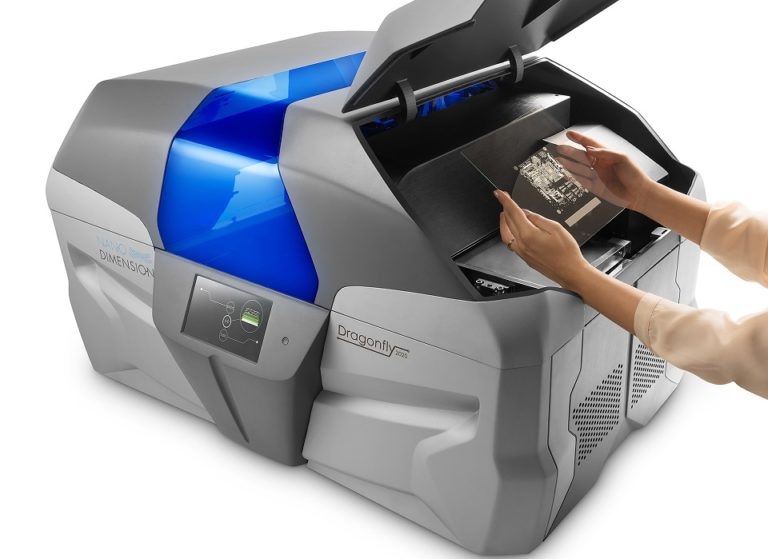Jul 31 2017
As beta testing recruitment for the Nano Dimension’s DragonFly 2020 3D printer ended recently, we gained some insight into a few of the companies that have been working with Nano Dimension, and what variety of applications they would find it useful for in making electronic boards. As one of the beta testing companies, and third to receive a Dragonfly 2020, German developer PHYTEC has also been part of a case study just released by Nano Dimension.
 Credit: Nano Dimension
Credit: Nano Dimension
PHYTEC was able to progress from concept to prototype all in the matter of a day with the use of the DragonFly 2020, demonstrating how electronics manufacturers can save time and money. As a developer of embedded systems and supporting applications, the industry leader will be able to get products to market faster.
“In electronics development, traditional manufacturing techniques mean long and expensive lead times,” states Nano Dimension in the recent case study. “Many companies find that the time it takes for numerous design iteration cycles significantly impacts product development projects.”
The beta testing was obvious a win for both companies, and PHYTEC is now switching to 3D printing for their electronics due to the speed and efficiency in workflow.
“The ability to create multiple iterations not only helps improve quality but also helps reveal potential flaws early, which eliminates the risk of costly changes in the post-production stage,” states Nano Dimension.
PHYTEC has always made microprocessor PCB designs in-house, but previously it would take at least eight days to create the final product, and sometimes as long as fifty. PHYTEC would have to pay substantial set-up fees for the PCBs, not to mention express mailing costs.
Bodo Huber, CTO for PHYTEC, explains that previously, the idea of using 3D printers for PCBs was considered a fantasy. As time went on though and the 3D printer became more mainstream, still accessibility, affordability, and finding the required precision were all continued challenges.
“The DragonFly 2020 is the first printer which is designed to provide suitable accuracy and precision for state-of-the-art electronics. Onsite printing of PCBs can easily save multiple days in waiting for PCBs. This allows you to get earlier access to functional prototypes,” says Huber.
“The most important benefit is the dramatic reduction in cycle time. It takes us 12 to 18 hours, depending on the size and complexity of a board to print a PCB. This is easily 10 to 15 times faster than ordering PCBs the tradition way.”
Huber states that some of the benefits in using the DragonFly 2020 are that it extends their rapid development capabilities for customers, allows for faster design validation, and overall design cycle time can be reduced for orders just by reducing the lead time for PCBs. The PHYTEC team also sees the use of 3D printing as allowing them to participate in one of the leading modern methodologies.
Phytec dramatically cuts lead time with Nano Dimension 3D Printed Electronics technology